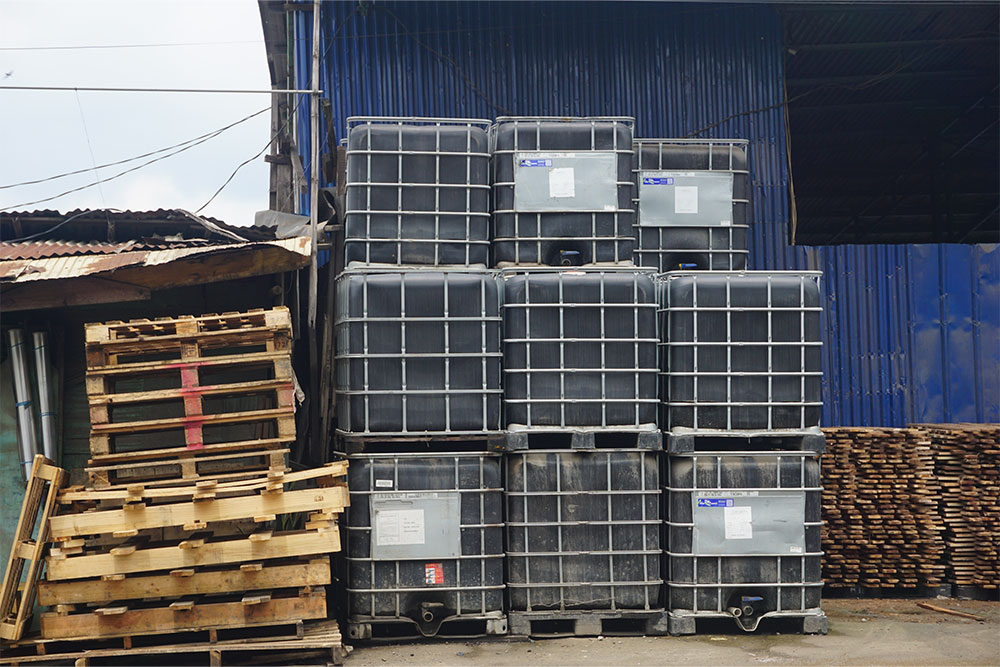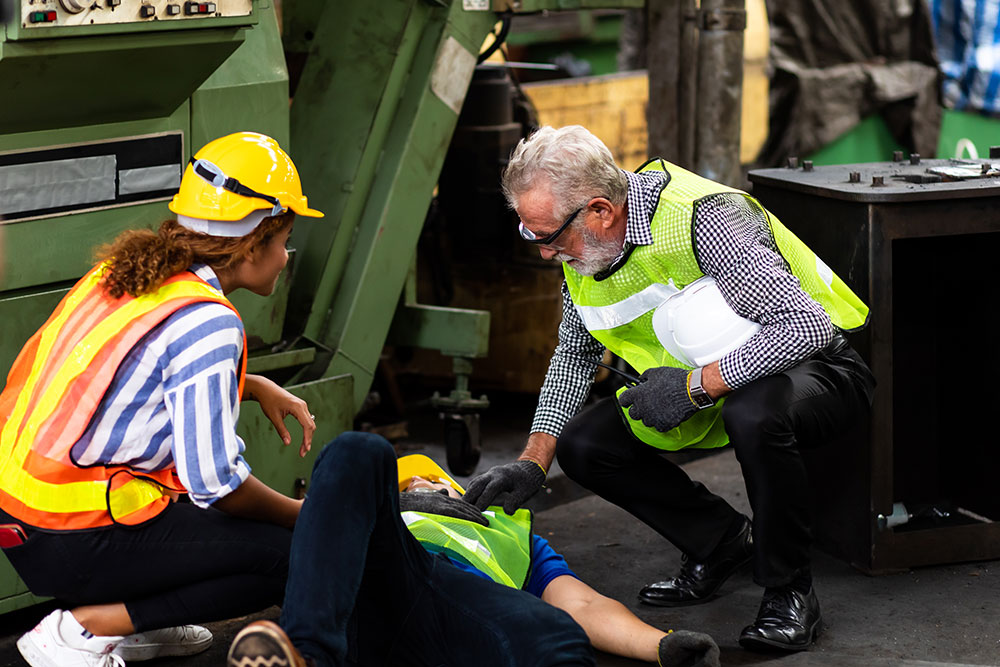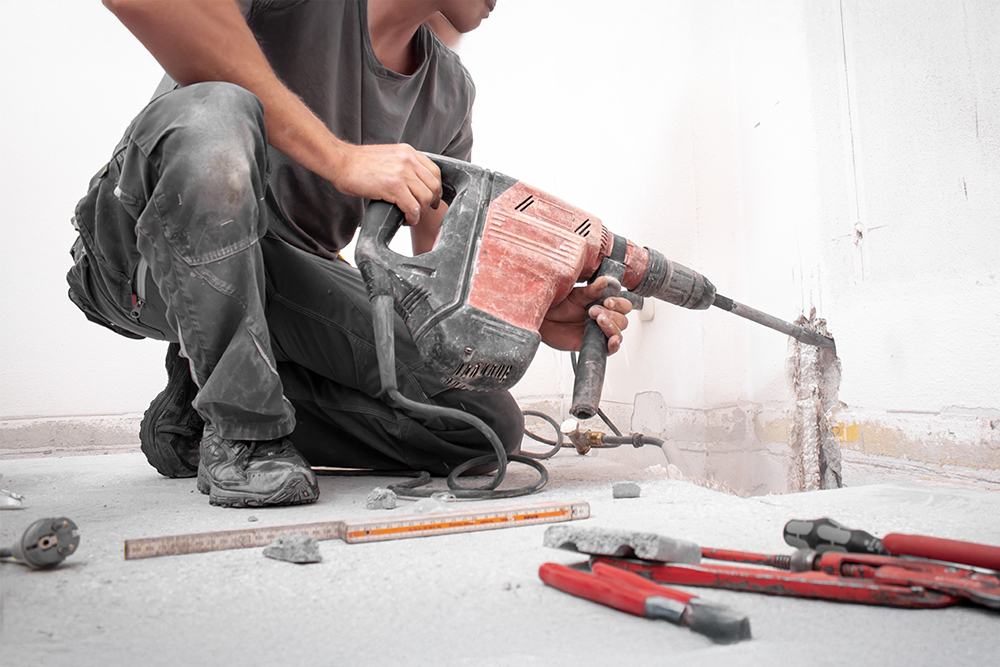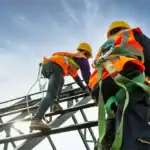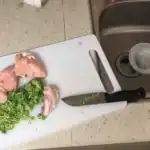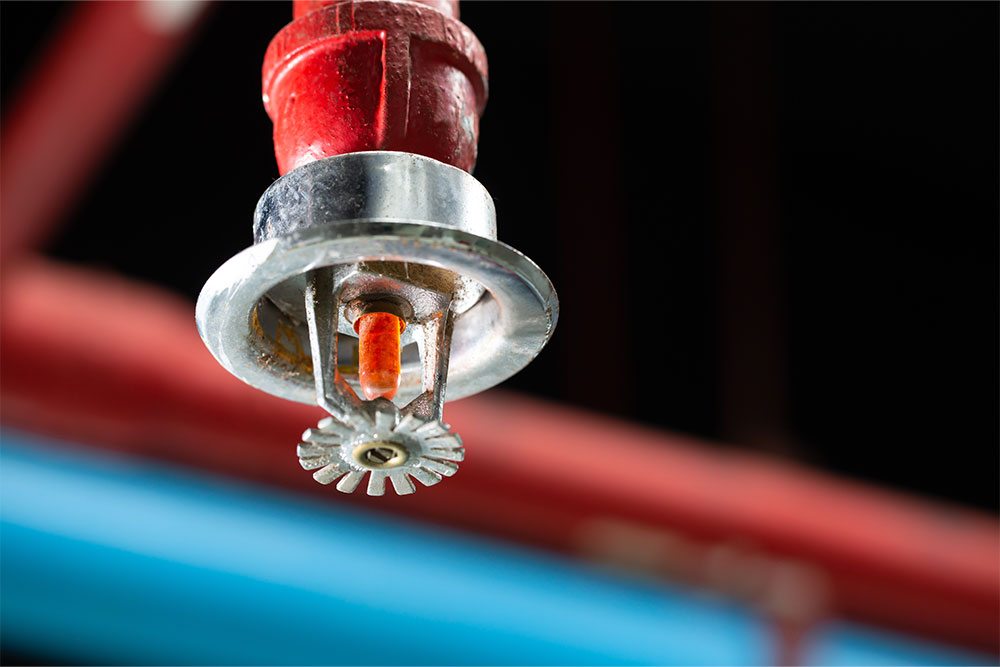
If you have a fire sprinkler system in your workplace or premises, you have a legal duty to ensure it’s kept in safe working order. But you can’t test sprinklers like you would a fire alarm or even a fire extinguisher. Instead, you need to arrange for regular fire sprinkler inspections.
This guide breaks down the basics of fire sprinkler inspections, including why they matter, when they need to be done and who can carry them out. It also covers safety standards to comply with to keep your system ready and working.
Key Takeaways
- Fire sprinkler inspections confirm that systems are working and ready to activate if a fire occurs.
- The Regulatory Reform (Fire Safety) Order 2005 requires responsible persons to arrange regular inspections.
- BS EN 12845 and LPC Rules for Automatic Sprinkler Installations 2015 provide guidance on inspection frequency and requirements to ensure compliance.
- Professional sprinkler system inspections must happen annually. Other intermittent checks are also advised.
How Do Fire Sprinklers Help Protect People and Property?
Fire sprinkler systems are always “on” and don’t need to be activated manually. Sprinklers react to high heat by releasing water over the affected area, stopping a fire from spreading before it can cause serious harm. This automatic response is essential for locations where fires could grow quickly or using fire extinguishers is unrealistic.
Each sprinkler head contains a heat-sensitive element (usually a glass bulb filled with liquid that expands and shatters at high temperatures). After they’ve been activated, heads need to be replaced, and the overall system also needs to be reset. So, sprinklers are effectively one-time use, meaning they can’t be tested traditionally. To confirm a system is working, it must be inspected.
What is a Fire Sprinkler Inspection?
A fire sprinkler inspection is a check to ensure the system will work as it should in the event of a fire. Because sprinklers are single-use, testing them is extremely expensive, not to mention disruptive. Inspections get around this problem.
During an inspection, competent professionals will check every part of the sprinkler system. A typical fire sprinkler inspection will check:
- Sprinkler heads for obstructions, blockages, corrosion or physical damage
- Control valves are in the correct position and undamaged
- Water pressure is high enough for each head to dowse its designated area fully
- Pipes and fittings for any leaks, corrosion or obstructions
- Connections between fire alarms and the sprinkler system are working
- Water supply is uninterrupted and meets the required capacity and refill rates
- Signs and labels, such as control valve labels, are up-to-date and easy to read
The inspector also needs to log their actions and inspection results, including advice on any required corrective actions. These records must be kept by the person responsible for the sprinkler system.
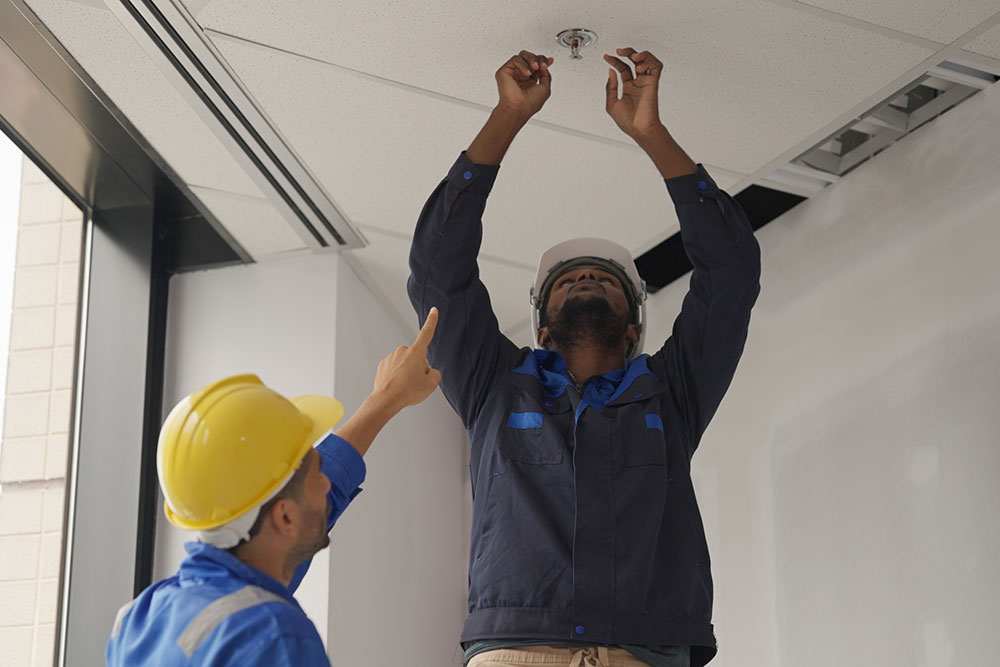
What Does the Law Say on Fire Sprinkler Inspections?
The primary legislation covering fire safety in the UK is the Regulatory Reform (Fire Safety) Order 2005 (FSO). The FSO requires non-domestic premises to have adequate fire control measures in place and to ensure they’re kept in “efficient working order and in good repair.”
The duty to implement and maintain fire safety measures falls on the “responsible person” within the organisation. The responsible person (the employer for workplaces or building owner/manager for other non-domestic premises) must ensure that fire safety systems are maintained and ready to work in an emergency. This duty includes arranging regular sprinkler system inspections.
While the FSO makes implementing and maintaining fire safety measures a legal requirement, it doesn’t dictate how to do this. That’s where British Standards and industry guidelines come in.
The main standards for fire sprinklers are British Standard EN 12845 and the LPC Rules for Automatic Sprinkler Installations 2015, which incorporates BS EN 12845. They provide a step-by-step approach to inspecting and maintaining sprinkler systems to ensure they’re ready to protect people and property. While these guidelines aren’t law, following them to the letter is essentially a guarantee of compliance with the FSO.
Why are Fire Sprinkler Inspections Necessary?
Fire sprinkler inspections are critical for a few key reasons. First, they confirm that the sprinkler system is in working order and will activate if a fire occurs. This confirmation is vital for ensuring compliance with fire safety regulations.
Inspections can also save money in the long run. Catching issues like blockages or corrosion early averts costly repairs or downtime from unexpected system failures.
Lastly, a working sprinkler system could ultimately save lives. Inspections ensure that the system is suited to your premises’ layout and provides the level of protection needed to contain a fire quickly, protecting both people and property.
When Must Fire Sprinkler Inspections Happen?
The necessary frequency of fire sprinkler inspections is set out in BS EN 12845 and the LPC Rules for Automatic Sprinkler Installations. According to these standards:
- Weekly: A basic visual check should be carried out to confirm that control valves are open, pressure levels are correct and nothing is obstructing or damaging the sprinkler heads. This type of check can be done by a competent person on-site.
- Monthly: More thorough monthly checks are also recommended, especially for testing water pumps. These checks include running the pumps to verify that they’re functional and meet the necessary pressure levels.
- Quarterly: Professional inspections are advised every three months. These involve checking system components, testing alarms connected to the system and ensuring that all parts are functioning as expected.
- Annually: A full inspection by qualified personnel should take place once a year, covering all aspects of the system. This annual check is also when hydraulic performance tests are done to verify water pressure and flow rates.
This inspection schedule helps maintain compliance with fire safety standards and ensures that all components are ready to perform if needed.
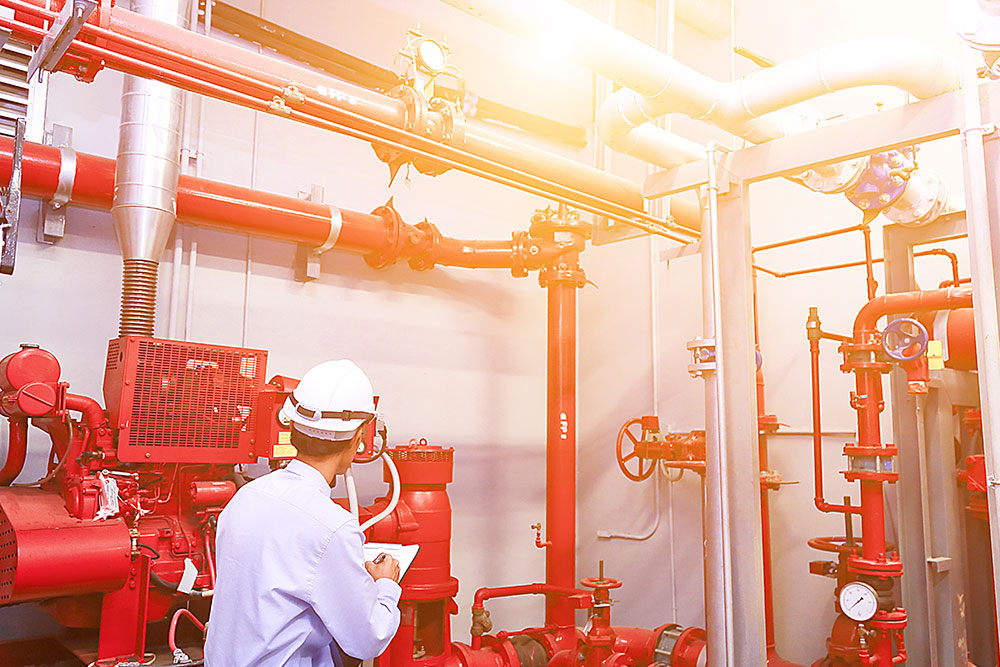
Who Can Carry Out Fire Sprinkler Inspections?
BS EN 12845 and the LPC Rules insist that inspections be carried out by competent people with the appropriate experience, knowledge and training. Here’s what that means in practice:
- Weekly and Monthly Checks: Routine checks can be carried out by a competent person on-site. This person doesn’t need extensive experience but should be familiar with the system and know what to look for.
- Quarterly and Annual Inspections: More detailed inspections must be carried out by accredited third parties. A certified fire safety contractor or a similarly qualified inspector should complete these inspections to ensure compliance and safety.
Fire Safety Inspection Training
Anyone responsible for fire safety has a duty to ensure all fire precautions are regularly checked, not just the sprinkler system. With the right knowledge and training, many of these checks can be done in-house, saving time and money.
Our online Fire Safety Inspection Training course will give you a comprehensive understanding of fire safety inspections and necessary equipment checks.
The course covers all essential areas, from fire risks and control measures to fire protection systems. It also includes a free e-Checklist, which walks you through inspections step-by-step and ensures all actions are recorded for compliance. Completing this course can give you the confidence to carry out regular fire safety inspections, keeping your workplace safe and compliant.




